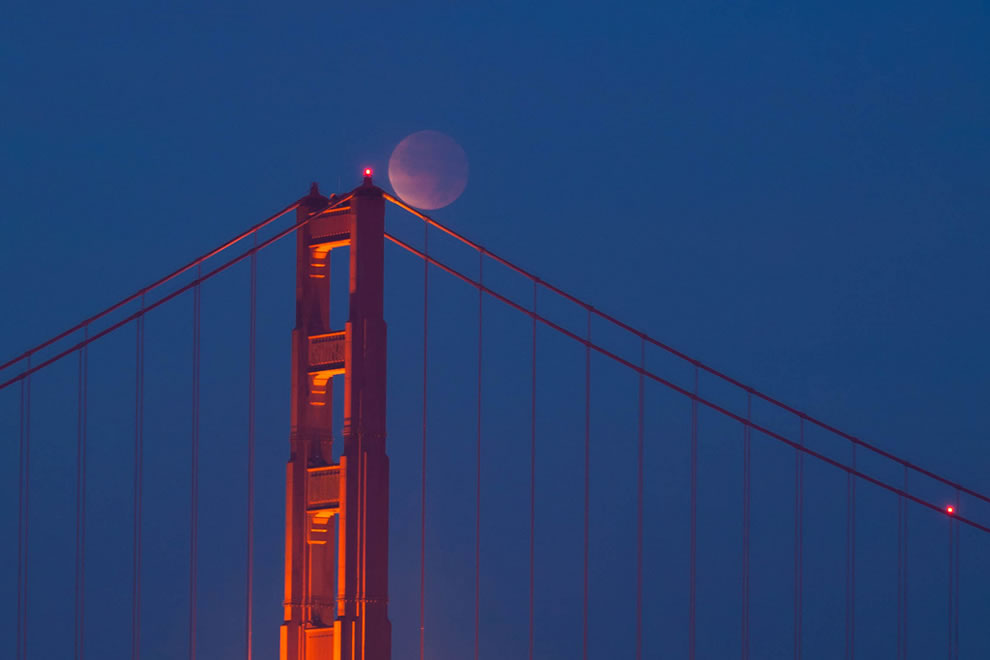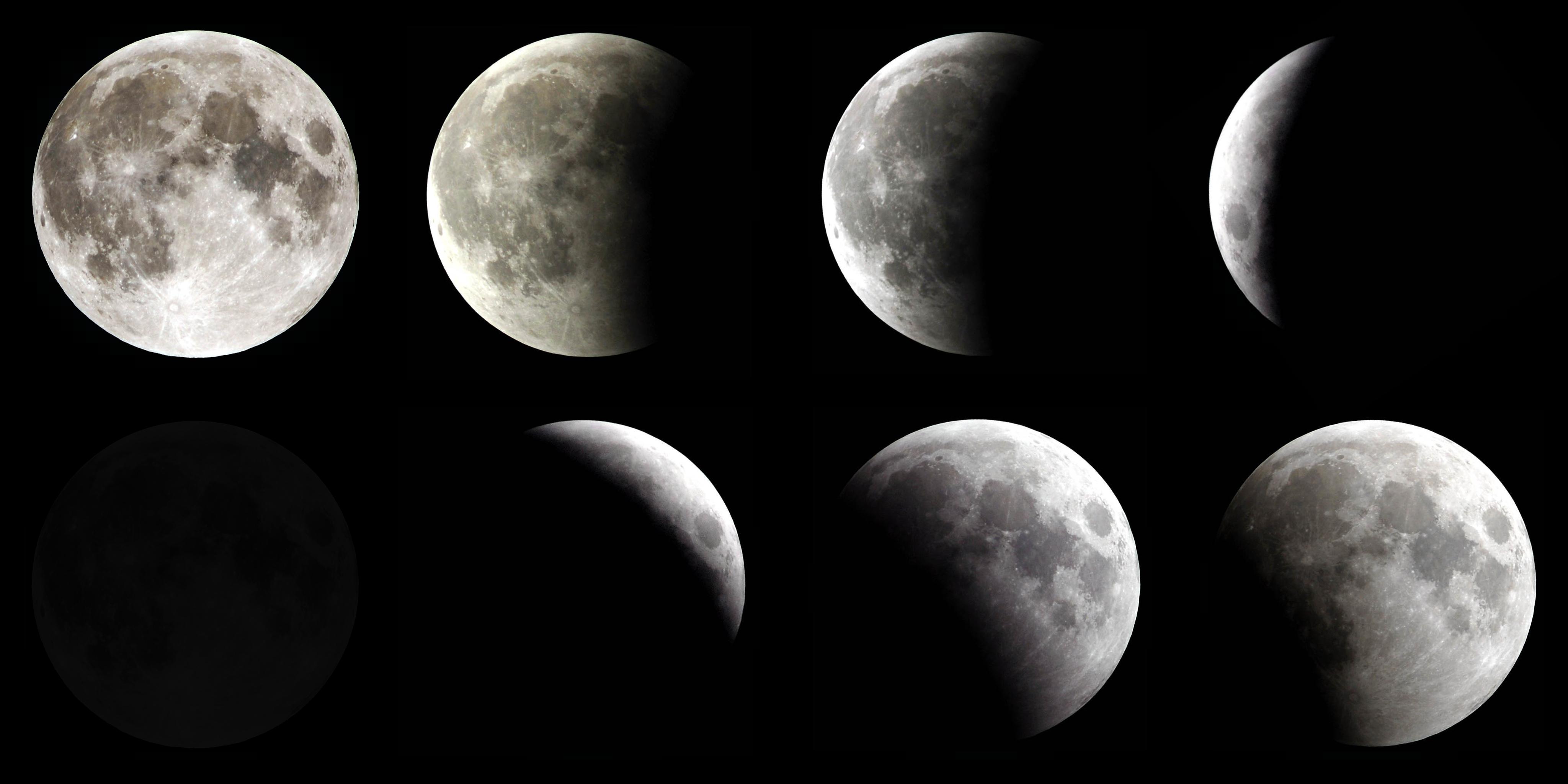
When the Moon Goes Dark
Phil Kesten
In late September, a total lunar eclipse will turn the moon a dark red, making it almost invisible. What is a lunar eclipse and what can we learn from one?
The next total lunar eclipse will occur on Sept. 27. Earth’s shadow will completely engulf the moon at about 7:47 p.m. in Santa Clara. If you’re watching the eclipse that evening (and you should!), the moon will appear as if shrouded in a dark, red veil.
Between two and four lunar eclipses occur every year, of which about one a year is total.
The sun, earth, and the moon all stay essentially on one flat “surface” in space. Earth sometimes moves into a position directly between the sun and the moon. When this happens, the moon passes through the shadow cast by earth. No sunlight strikes the moon directly, and it becomes dark. A total lunar eclipse. Between two and four lunar eclipses occur every year, of which about one a year is total. But wait! If earth blocks sunlight from hitting the moon, why isn’t the moon completely dark, that is, not visible at all? And why does it appear red?
Some sunlight can sneak past earth by passing through earth’s atmosphere. But as we learned from wondering about the color of the sky, light bounces around as it passes through the atmosphere; blue colors of light get scattered the most. Light that gets through earth’s atmosphere therefore has a lot of the blue colors removed, making it a bit reddish. This reddish light strikes the moon and reflects back toward earth. The moon appears red; people sometimes refer to a total lunar eclipse as a “blood moon.”

A total lunar eclipse seen over the Golden Gate Bridge is a striking image!
Lunar eclipses are grand astronomical spectacles. They have also played a key role in advancing our understanding of the world. Some 2,400 years ago, Greeks noticed that earth’s shadow as it advanced across the moon during a lunar eclipse was circular. From these observations, Greek astronomers deduced that that earth is spherical.
Hundreds of years ago, when sailing across the ocean represented the pinnacle of human accomplishment, it was essential for sailors to be able to determine their geographical location. An accurate clock was invaluable, and what more accurate clock was available than a lunar eclipse? After all, an eclipse of the moon is visible across half of earth’s surface, and it starts and ends at the same instant for everyone. That universal “eclipse” time compared to the local time – determined by when the sun rises and sets in a particular location – allows for a precise measurement of one’s longitude on the globe.
When you watch the lunar eclipse, stare at the moon as long as you like. Imagine the sun, earth, and the moon all in alignment and the inky black shadow earth throws across space. Drink in the spectacle!
-----------------------------------------------------------
Questions to ponder
Over the course of a month we see the phase of the moon change, from full, to quarter, to new, and finally back to full. Can an eclipse of the moon occur during any phase of the moon? If not, during what phase or phases can an eclipse occur? Does your answer depend on whether the eclipse is total or not?

Phases of the moon
Sep 14, 2015

